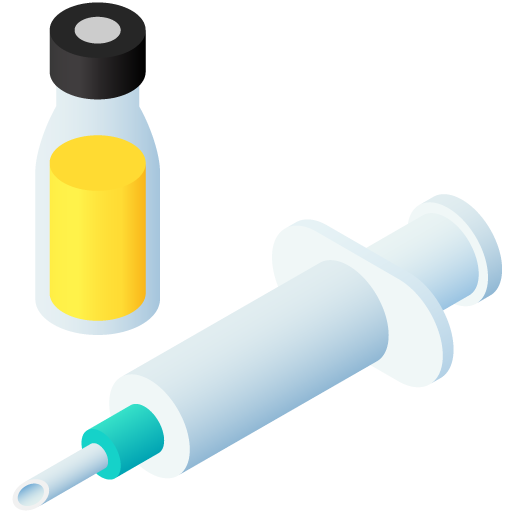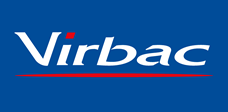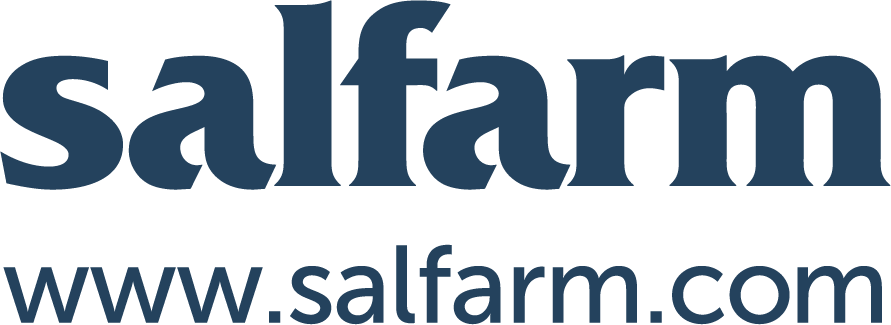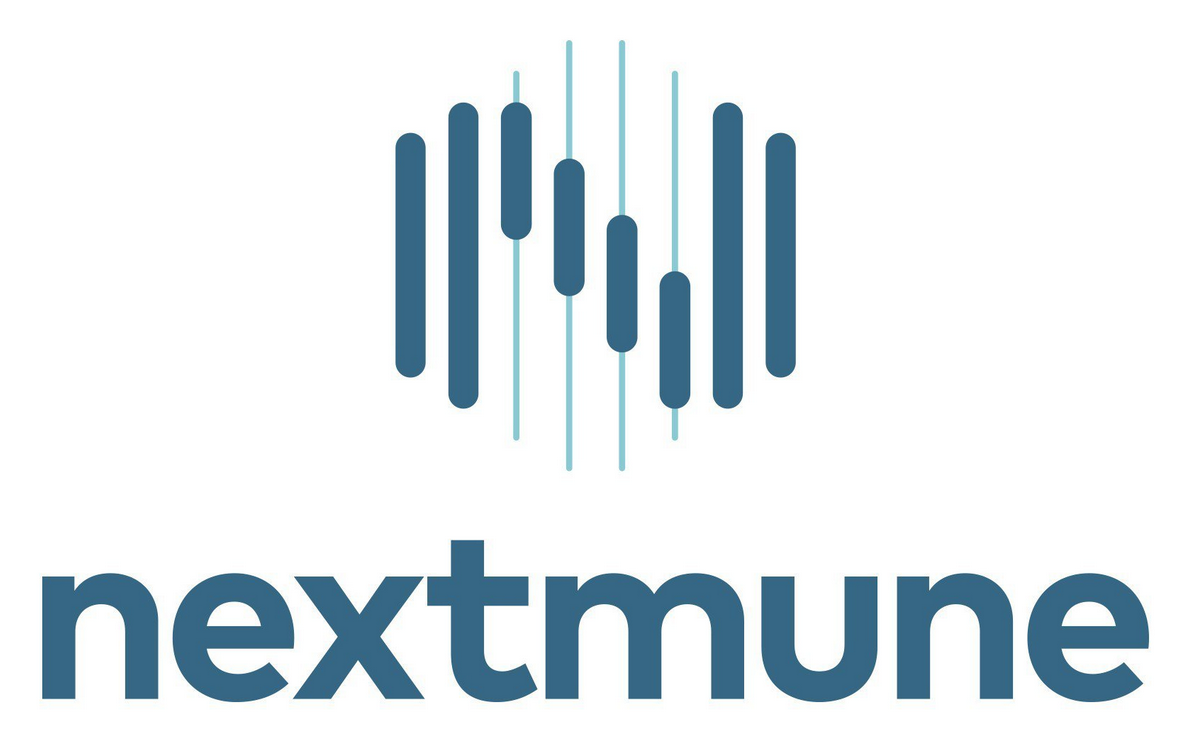Combination therapy
No results were found for your selected species
Suvaxyn PRRS MLV
ATC code
Species
Pigs (pigs for fattening, gilts and sows).
Indications
For active immunisation of clinically healthy pigs from 1 day of age in a porcine respiratory and reproductive syndrome (PRRS) virus contaminated environment, to reduce viraemia and nasal shedding caused by infection with European strains of PRRS virus (genotype 1).
Onset of immunity: 3 weeks.
Duration of immunity: 26 weeks.
Fattening pigs:
In addition, intramuscular vaccination of seronegative 1-day-old piglets was demonstrated to reduce lung lesions against challenge administered at 26 weeks post vaccination. Intramuscular vaccination of seronegative 2-week-old piglets was demonstrated to reduce lung lesions and oral shedding against challenge administered at 28 days and at 16 weeks post-vaccination.
Additionally, nasal vaccination of seronegative 3-day-old piglets reduced viraemia, nasal shedding and lung lesions against challenge administered at 21 days postvaccination. Nasal vaccination of seropositive 3-day-old piglets reduced viraemia, nasal shedding and lung lesions against challenge administered 10 weeks postvaccination.
Gilts and sows:
In addition, pre-pregnancy vaccination of clinically healthy gilts and sows, non-PRRS virus-naïve (i.e. either previously immunised against PRRS virus via vaccination or exposed to PRRS virus via field infection) or PRRS virus-naïve, was demonstrated to reduce the transplacental infection caused by PRRS virus during the last third of pregnancy, and to reduce the associated negative impact on reproductive performance (reduction of the occurrence of stillbirths, of piglet viraemia at birth and at weaning, of lung lesions and of viral load in lungs in piglets at weaning).
Dose to be administered and administration route
Method of administration:
Immunisation must be carried out by intramuscular or nasal administration.
Reconstitute the lyophilisate with the supplied solvent. In cases where the vials containing the solvent and the lyophilisate are stored separately, verify prior to reconstituting the lyophilisate that the lot number mentioned on the vial containing the solvent is identical to the lot number mentioned on the vial containing the lyophilisate.
Reconstitute the vaccine with the corresponding solvent:
|
Number of doses per vial (lyophilisate) |
Volume of solvent needed |
|
25 ds |
50 ml |
|
50 ds |
100 ml |
|
125 ds |
250 ml |
Transfer approximately 5 ml of solvent to the vial containing the lyophilisate and ensure complete reconstitution. Transfer back the reconstituted solution into the solvent vial (containing the remaining solvent): 25 doses are reconstituted into 50 ml solvent, 50 doses are reconstituted into 100 ml solvent, and 125 doses are reconstituted into 250 ml solvent.
|
Number of doses per vial (lyophilisate) |
Volume of solvent needed |
| 100 ds | 50 ml |
Transfer approximately 5 ml of solvent to the vial containing the lyophilisate and ensure complete reconstitution. Transfer back the reconstituted solution into the solvent vial (containing the remaining solvent): 100 doses are reconstituted into 50 ml solvent.
After reconstitution, the suspension should be orange coloured liquid which might contain a loose resuspendable sediment.
Dosage:
Intramuscular administration: 2 ml 0.5 ml in the neck.
Nasal administration: 2 ml administered as 1 ml in each nostril. Nasal administration:
0.5 ml administered in one nostril.
Vaccination schedule:
Pigs for fattening from 1 day of age onwards:
A single dose of 2 ml 0.5 ml is given to pigs via intramuscular administration.
Pigs for fattening from 3 days of age onwards:
A single dose of 2 ml is given to pigs via intramuscular administration, or a single dose of 2 ml is given to pigs via nasal route by administering 1 ml in each nostril using a sterile syringe not connected to a needle. A single dose of 0.5 ml is given to pigs via intramuscular administration, or a single dose of 0.5 ml is given to pigs via nasal route by administration in one nostril using a sterile syringe not connected to a needle.
Gilts and sows:
A single dose of 2 ml 0.5 ml is given via intramuscular administration prior to introduction into the sow herd, approximately 4 weeks prior to breeding. A single booster dose is given every 6 months. Use sterile syringes and needles.
The use of a multi-dosing syringe is recommended. Use vaccination devices according to the manufacturer’s instructions. Needles for administration should be appropriate for the size of the pig.
Adverse reactions
Pigs for fattening
|
Very common (>1 animal / 10 animals treated): |
Elevated temperature1 |
|
Common (1 to 10 animals / 100 animals treated): |
Injection site swelling2 |
|
Uncommon (1 to 10 animals / 1,000 animals treated): |
Anaphylactic-type reactions (e.g. vomiting, tremors and/or mild depression)3 |
1Transient; observed within 4 days after vaccination. On average 0.5 °C and up to 1.4 °C individually.
2In general below 2 cm in diameter; resolves in 3 days.
3Observed shortly after vaccination. Resolves without treatment within few hours.
Pre-breeding PRRS virus-naïve gilts and sows
|
Very common (>1 animal / 10 animals treated): |
Elevated temperature1 Injection site swelling2 |
1Transient; observed 4 hours post vaccination. On average 0.2 °C and up to 1.0 °C individually.
2In general below0.5 cm in diameter; resolves spontaneously within 5 days without treatment.
PRRS virus-naïve gilts and sows in the first half of gestation
|
Very common (>1 animal / 10 animals treated): |
Elevated temperature1 Injection site swelling2 |
1Transient; observed 4 hours post vaccination. On average 0.8 °C and up to 1.0 °C individually.
2In general, below 1.4 cm in diameter; resolves spontaneously within 9 days without treatment.
Non-PRRS virus-naïve gilts and sows in the second half of gestation
|
Very common (>1 animal / 10 animals treated): |
Elevated temperature1 Injection site swelling2 |
1Transient; observed 4 hours post vaccination. On average 0.4 °C and up to 0.6 °C individually.
2 In general below 5 cm in diameter; resolves spontaneously within 32 days without treatment.
Lactating sows
|
Very common (>1 animal / 10 animals treated): |
Elevated temperature1 Decreased appetite2 Injection site swelling3 |
1Up to 2.2 ºC. Observed 2 days post vaccination; resolves spontaneously within 4 days without treatment.
2Observed 1 - 4 days post vaccination and resolves spontaneously within 3 days without treatment.
3 Up to 11 cm in diameter; Resolves spontaneously within 3 days without treatment. Reporting adverse events is important. It allows continuous safety monitoring of a veterinary medicinal product.
Reports should be sent, preferably via a veterinarian, to either the marketing authorisation holder or the national competent authority via the national reporting system. See the package leaflet for respective contact details.
Dispensing
POM-V - Prescription Only Medicine – VeterinarianSUMMARY OF PRODUCT CHARACTERISTICS
1. NAME OF THE VETERINARY MEDICINAL PRODUCT
Suvaxyn PRRS MLV lyophilisate and solvent for suspension for injection for pigs
2. QUALITATIVE AND QUANTITATIVE COMPOSITION
Each dose (2 ml) contains:
Lyophilisate:
Active substance:
Modified live PRRSV-1*, strain 96V198: 102.2 – 105.2 CCID50**
* Porcine respiratory and reproductive syndrome virus, genotype 1 ** Cell culture infectious dose 50%
Solvent:
Sodium chloride 0.9% solution: qs 1 dose.
For the full list of excipients, see section 6.1.
3. PHARMACEUTICAL FORM
Lyophilisate and solvent for suspension for injection. Lyophilisate: off-white freeze-dried pellet.
Solvent: clear, colourless solution.
4. CLINICAL PARTICULARS
4.1 Target species
Pigs (pigs for fattening, gilts and sows)
4.2 Indications for use, specifying the target species
For active immunisation of clinically healthy pigs from 1 day of age in a porcine respiratory and reproductive syndrome (PRRS) virus contaminated environment, to reduce viraemia and nasal shedding caused by infection with European strains of PRRS virus (genotype 1).
Onset of immunity: 21 days after vaccination.
Duration of immunity: 26 weeks after vaccination.
Fattening pigs:
In addition, intramuscular vaccination of seronegative 1-day-old piglets was demonstrated to reduce lung lesions against challenge administered at 26 weeks post vaccination. Intramuscular vaccination of seronegative 2-week-old piglets was demonstrated to reduce lung lesions and oral shedding against challenge administered at 28 days and at 16 weeks post-vaccination.
Additionally, nasal vaccination of seronegative 3-day-old piglets reduced viraemia, nasal shedding and lung lesions against challenge administered at 21 days postvaccination. Nasal vaccination of seropositive 3-day-old piglets reduced viraemia, nasal shedding and lung lesions against challenge administered 10 weeks postvaccination.
Gilts and sows:
In addition, pre-pregnancy vaccination of clinically healthy gilts and sows, non-PRRS virus-naïve (i.e. either previously immunised against PRRS virus via vaccination or exposed to PRRS virus via field infection) or PRRS virus-naïve, was demonstrated to reduce the transplacental infection caused by PRRS virus during the last third of pregnancy, and to reduce the associated negative impact on reproductive performance (reduction of the occurrence of stillbirths, of piglet viraemia at birth and at weaning, of lung lesions and of viral load in lungs in piglets at weaning).
4.3 Contraindications
Do not use in herds where European PRRS virus has not been detected by reliable diagnostic methods.
Do not use in boars producing semen, as PRRS virus can be shed in semen.
Do not use in PRRS virus-naïve pregnant gilts and sows in the second half of gestation because the vaccine strain may cross the placenta. The administration of the vaccine to pregnant PRRS virus-naïve gilts and sows in the second half of gestation may have an impact on their reproductive performance.
4.4 Special warnings for each target species
Vaccinate healthy animals only.
Do not vaccinate pigs younger than 3 days by nasal route since the concurrent intake of colostrum may interfere with the efficacy of the vaccine.
4.5 Special precautions for use
Special precautions for use in animals
Vaccination should aim to achieve a homogenous immunity in the target population at farm level.
Care should be taken to avoid the introduction of the vaccine strain into an area where PRRS virus is not already present.
Animals vaccinated via intramuscular route may excrete the vaccine strain for more than 16 weeks following vaccination. Animals vaccinated via nasal route may excrete the vaccine strain for more than 10 weeks. The vaccine strain can spread to incontact pigs. The most common spreading route is via direct contact but spreading via contaminated objects or an airborne spread cannot be excluded.
Special precautions should be taken to avoid spreading of the vaccine strain to unvaccinated animals (e.g. PRRS virus-naïve pregnant gilts and sows in the second half of gestation) that should remain free from PRRS virus.
PRRS virus-naïve breeding animals (e.g. replacement gilts from PRRS virus-negative herds) which are introduced into a PRRSV-infected herd should be vaccinated prior to first insemination.
Vaccination should preferably be done in a separated quarantine unit. A transition period should be respected between vaccination and moving the animals to the breeding unit. This transition period should be longer than the shedding phase of the PRRS MLV vaccine following vaccination.
In order to limit the potential risk of recombination between PRRS vaccine strains of the same genotype, do not use different PRRS MLV vaccines based on different strains of the same genotype on the same farm at the same time. In the case of transitioning from one PRRS MLV vaccine to another PRRS MLV vaccine, a transition period should be respected between the last administration of the current vaccine and the first administration of the new vaccine. This transition period should be longer than the shedding period of the current vaccine following vaccination. Do not routinely rotate two or more commercial PRRS MLV vaccines based on different strains in a herd.
Special precautions to be taken by the person administering the veterinary medicinal product to animals
None.
4.6 Adverse reactions (frequency and seriousness)
A transient increase in rectal temperature (0.5 °C on average, and up to 1.4 °C individually) may very commonly occur within 4 days after vaccination. Local reactions in the form of swellings are common and resolve spontaneously within 3 days. The area of local tissue reaction is in general below 2 cm in diameter. Anaphylactic-type reactions (vomiting, tremors and/or mild depression) may uncommonly occur in piglets shortly after vaccination. These resolve without treatment within few hours.
A minor and transient increase in rectal temperature (0.2 °C on average, and up to 1.0 °C individually) may very commonly occur 4 hours post vaccination in prebreeding PRRS virus-naïve gilts and sows. Local reactions in the form of swellings are very common and resolve spontaneously within 5 days. The area of local tissue reaction is in general below 0.5 cm in diameter.
A minor and transient increase in rectal temperature (0.8 °C on average, and up to 1.0 °C individually) may very commonly occur 4 hours post vaccination in PRRS virus-naïve gilts and sows in the first half of gestation. Local reactions in the form of swellings are very common and resolve spontaneously within 9 days. The area of local tissue reaction is in general below 1.4 cm in diameter.
A minor and transient increase in rectal temperature (0.4 °C on average, and up to 0.6 °C individually) may very commonly occur 4 hours post vaccination in non-PRRS virus-naïve gilts and sows in the second half of gestation. Local reactions in the form of swellings are very common and resolve spontaneously within 32 days. The area of local tissue reaction is in general below 5 cm in diameter.
The frequency of adverse reactions is defined using the following convention:
- very common (more than 1 in 10 animals treated displaying adverse reaction(s))
- common (more than 1 but less than 10 animals in 100 animals treated)
- uncommon (more than 1 but less than 10 animals in 1,000 animals treated)
- rare (more than 1 but less than 10 animals in 10,000 animals treated)
- very rare (less than 1 animal in 10,000 animals treated, including isolated reports).
4.7 Use during pregnancy, lactation or lay
Pregnancy:
Can be used in PRRS virus-naïve gilts and sows pre-breeding or in the first half of gestation.
Can be used in non-PRRS virus-naïve gilts and sows in the second half of gestation.
Lactation:
The safety of the vaccine has not been established during lactation.
4.8 Interactions with other medicinal products and other forms of interaction
No information is available on the safety and efficacy of this vaccine when used with any other veterinary medicinal product.
A decision to use this vaccine before or after any other veterinary medicinal product therefore needs to be made on a case by case basis.
4.9 Amounts to be administered and administration route
Method of administration:
Immunisation must be carried out by intramuscular or nasal administration.
Reconstitute the lyophilisate with the supplied solvent. In cases where the vials containing the solvent and the lyophilisate are stored separately, verify prior to reconstituting the lyophilisate that the lot number mentioned on the vial containing the solvent is identical to the lot number mentioned on the vial containing the lyophilisate. Transfer approximately 5 ml of solvent to the vial containing the lyophilisate and ensure complete reconstitution. Transfer back the reconstituted solution into the solvent vial (containing the remaining solvent): 25 doses are reconstituted into 50 ml solvent, 50 doses are reconstituted into 100 ml solvent, and 125 doses are reconstituted into 250 ml solvent.
Dosage:
Intramuscular injection: 2 ml in the neck.
Nasal administration: 2 ml administered as 1 ml in each nostril.
Vaccination schedule:
Pigs for fattening from 1 day of age onwards:
A single dose of 2 ml is given to pigs via intramuscular administration.
Pigs for fattening from 3 days of age onwards:
A single dose of 2 ml is given to pigs via intramuscular administration, or a single dose of 2 ml is given to pigs via nasal route by administering 1 ml in each nostril using a sterile syringe not connected to a needle.
Gilts and sows: A single dose of 2 ml is given intramuscularly prior to introduction into the sow herd, approximately 4 weeks prior to breeding. A single booster dose is given every 6 months.
Use sterile syringes and needles.
The use of a multi-dosing syringe is recommended. Use vaccination devices according to the manufacturer’s instructions. Needles for administration should be appropriate for the size of the pig.
4.10 Overdose (symptoms, emergency procedures, antidotes), if necessary
Upon administration of a 10-fold overdose in piglets, anaphylactic-type reactions (tremor, apathy and/or vomiting) were very commonly observed shortly after vaccination; these signs resolved without treatment within a few hours. A transient increase in rectal temperature (0.3 °C on average, and up to 1.2 °C individually) very commonly occurred 24 hours post vaccination. Local reactions, in the form of soft/hard swelling (below or equal to 0.7 cm diameter) without heat or pain, were very commonly observed at the injection site and resolved within 5 days.
The administration of a 10-fold overdose to PRRS virus-naïve pre-breeding or pregnant gilts and sows in the first or second half of pregnancy induced similar adverse reactions as those described under section 4.6. The maximum size of the local reactions was bigger (2 cm) and the maximum duration was in general longer (up to 9 days in pre-breeding sows).
After the administration of a 10-fold overdose to non-PRRS virus-naïve gilts and sows in the second half of pregnancy a transient increase in rectal temperature (0.3 °C on average, and up to 0.6 °C individually) occurred 4 hours post vaccination. A local reaction involving transiently the whole neck region was very commonly observed (red-purple dark, erythematous swelling, causing itching, vesicle formation, increased local temperature, and, occasionally, pain). The reaction evolved to form hard tissue and formation of a scab, which very commonly lasted up to more than 44 days.
4.11 Withdrawal period
Zero days.
5. IMMUNOLOGICAL PROPERTIES
Pharmacotherapeutic group: immunologicals for Suidae, live viral vaccines.
ATCvet code: QI09AD03.
The vaccine contains a modified live PRRS virus (genotype 1, subtype 1). It stimulates active immunity against PRRS virus. Vaccine efficacy has been demonstrated in laboratory vaccination and challenge studies using a genotype 1 subtype 1 strain.
Additional clinical studies demonstrated that intramuscular vaccination of
seronegative 1-day-old piglets conferred protection against another subtype-1 strain (AUT15-33), a subtype-2 strain (BOR57) and a subtype-3 strain (Lena) of PRRS virus genotype 1.
6. PHARMACEUTICAL PARTICULARS
6.1 List of excipients
Lyophilisate:
Dextran 40
Casein hydrolysate
Lactose monohydrate
Sorbitol 70% (solution)
Sodium hydroxide
Water for injections Dilution medium
Solvent:
Sodium chloride
Water for injections
6.2 Major incompatibilities
Do not mix with any other veterinary medicinal product.
6.3 Shelf life
Shelf life of the veterinary medicinal product as packaged for sale: 2 years. Shelf life after reconstitution: use immediately.
6.4 Special precautions for storage
Store and transport refrigerated (2 °C – 8 °C).
The solvent may be stored outside a refrigerator at 15 °C – 25 °C.
For storage conditions of the reconstituted medicinal product, see section 6.3. Do not freeze.
Protect from light.
6.5 Nature and composition of immediate packaging
Vaccine (lyophilisate):
Ph. Eur. Type 1 hydrolytic glass vials of 15 ml (25, 50 or 125 doses), with a bromobutyl elastomer closure and sealed with an aluminium cap.
Solvent:
High-density polyethylene (HDPE) vials of 50, 100 or 250 ml of solvent, with a chlorobutyl elastomer closure and sealed with an aluminium cap.
Cardboard box of 1 vial of 15 ml (25 doses) and 1 vial of 50 ml of solvent.
Cardboard box of 1 vial of 15 ml (50 doses) and 1 vial of 100 ml of solvent.
Cardboard box of 1 vial of 15 ml (125 doses) and 1 vial of 250 ml of solvent.
Not all pack sizes may be marketed.
6.6 Special precautions for the disposal of unused veterinary medicinal product or waste material derived from the use of such products, if appropriate
Any unused veterinary medicinal product or waste materials derived from such veterinary medicinal product should be disposed of in accordance with the local requirements.
7. MARKETING AUTHORISATION HOLDER
Zoetis UK Limited
1st Floor, Birchwood Building
Springfield Drive
Leatherhead
Surrey
KT22 7LP
8. MARKETING AUTHORISATION NUMBER
Vm 42058/5075
9. DATE OF FIRST AUTHORISATION
24 August 2017
10. DATE OF REVISION OF THE TEXT
July 2023
PROHIBITION OF SALE, SUPPLY AND/OR USE
 Any person intending to manufacture, import, possess, sell, supply and use this veterinary medicinal product must first consult the relevant Member State’s competent authority on the current vaccination policies, as these activities may be prohibited in a Member State on the whole or part of its territory pursuant to national legislation.
Any person intending to manufacture, import, possess, sell, supply and use this veterinary medicinal product must first consult the relevant Member State’s competent authority on the current vaccination policies, as these activities may be prohibited in a Member State on the whole or part of its territory pursuant to national legislation.
Approved: 28 July 2023

| Art. Nr. | 42058/5075 |
|---|---|
| EAN | 5414736036724 |
 TRUSTED SOURCE
TRUSTED SOURCE








